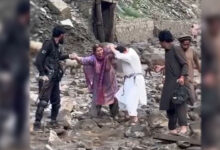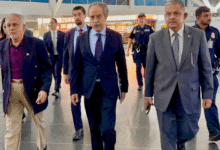Women, Peace, and Security in Afghanistan

The story of women, peace, and security in Afghanistan is a complex narrative woven with threads of resilience, struggle, and hope. The topic is central not only to Afghanistan’s future but also to the broader global discourse on human rights and peacebuilding. Over the past decades, Afghan women have played crucial roles in the pursuit of peace and security, yet they have also faced extraordinary challenges, particularly since the return of the Taliban to power in August 2021. This article delves into the intricate dynamics of women, peace, and security in Afghanistan, highlighting the progress made, the setbacks experienced, and the way forward.
Historical Context: Women in Afghan Society
Afghanistan has long been a battleground of competing ideologies, often leaving women caught in the crossfire. Historically, Afghan women have faced various forms of exclusion and marginalization, deeply rooted in cultural, religious, and political practices. The Soviet invasion in 1979, the subsequent civil war, and the rise of the Taliban in the 1990s led to significant regressions in women’s rights. Under the Taliban regime from 1996 to 2001, women were stripped of nearly all their rights, including education, employment, and freedom of movement. The fall of the Taliban in 2001 marked a turning point, as the international community, led by the United States, intervened, promising to support women’s rights and broader human rights.
Progress and Achievements Post-2001
The years following 2001 witnessed significant progress for Afghan women, particularly in urban areas. The new Afghan constitution, adopted in 2004, enshrined gender equality and guaranteed women’s rights to education, work, and political participation. Women began to play increasingly visible roles in public life; they were elected to parliament, served as ministers, and participated in civil society organizations. Education was a key area of progress—millions of girls enrolled in schools, and universities saw a significant rise in female students.
Moreover, Afghanistan became a signatory to international conventions such as the Convention on the Elimination of All Forms of Discrimination Against Women (CEDAW), and adopted the National Action Plan on Women, Peace, and Security (NAP-WPS) in 2015, aligning with the UN Security Council Resolution 1325. The NAP-WPS emphasized women’s involvement in peace processes, protection from violence, and their role in post-conflict reconstruction.
The Return of the Taliban: A Reversal of Gains
The rapid return of the Taliban to power in August 2021 marked a devastating setback for Afghan women. The Taliban, despite assurances to the international community that they would respect women’s rights “within Islamic law,” quickly reimposed many of the restrictions that characterized their previous rule. Women were barred from most forms of employment, and girls’ secondary education was suspended in most provinces. The Ministry of Women’s Affairs was dismantled and replaced by the Ministry for the Propagation of Virtue and the Prevention of Vice, a body known for enforcing strict interpretations of Islamic law during the Taliban’s previous rule.
The situation of Afghan women under the Taliban regime highlights the fragility of the gains made over the past two decades. Many women who had held public office, worked as journalists, or participated in activism were forced into hiding or fled the country. Civil society organizations that advocated for women’s rights have faced harassment, closure, and threats. The reversal of women’s rights has not only been a moral and human rights issue but also a severe impediment to peace and security in the country.
Women’s Role in Peacebuilding: A Missed Opportunity
The exclusion of women from peace negotiations has been a significant missed opportunity for sustainable peace in Afghanistan. Women’s involvement in peace processes is not just a matter of justice; it is also essential for the success and durability of peace agreements. Studies show that peace agreements are more likely to last when women are involved in the negotiation process. In Afghanistan, however, women have often been sidelined in formal peace talks.
The Doha talks, which led to the U.S.-Taliban agreement in 2020, were a clear example of this exclusion. Despite the fact that Afghan women had been vocal in demanding a seat at the table, their participation was minimal. This exclusion has contributed to the current situation, where the Taliban’s policies are once again eroding women’s rights, undermining the very foundations of a just and lasting peace.
The Human Security Perspective
The concept of human security shifts the focus from state-centric security to the security of individuals, particularly marginalized groups such as women. In Afghanistan, women’s security is closely linked to broader issues of economic stability, social cohesion, and the rule of law. The current Taliban regime’s policies have exacerbated insecurities for women, not only in terms of physical safety but also in access to basic services, economic opportunities, and social participation.
Economic insecurity is a particularly pressing issue. With many women barred from working, families have lost critical sources of income, pushing them further into poverty. This economic marginalization is intertwined with other forms of insecurity, including food insecurity, lack of access to healthcare, and increased vulnerability to violence. The situation is particularly dire for widows, single mothers, and women-headed households, who have fewer social protections.
International Response and the Way Forward
The international community’s response to the Taliban’s policies on women’s rights has been one of condemnation and concern. Sanctions, diplomatic isolation, and calls for accountability have been central to this response. However, the effectiveness of these measures is debatable. The international community faces the dilemma of how to engage with a regime that violates human rights without legitimizing it. At the same time, there is an urgent need to address the humanitarian crisis in Afghanistan, which disproportionately affects women and children.
Moving forward, any sustainable solution for Afghanistan must include women’s rights and participation as a core element. The international community must continue to pressure the Taliban to respect women’s rights while supporting Afghan women’s organizations and civil society. Humanitarian aid should be gender-sensitive, ensuring that women and girls have access to education, healthcare, and economic opportunities.
Moreover, there needs to be a renewed focus on the Women, Peace, and Security agenda, with particular attention to implementing UN Security Council Resolution 1325. The principles of this resolution—participation, protection, prevention, and relief and recovery—should guide all international efforts in Afghanistan. Women’s participation in peace processes must be non-negotiable, and their protection from violence must be a priority.
In the End, The situation of women in Afghanistan is a bellwether for the country’s future. As history has shown, the exclusion of women from public life and peace processes not only harms women but also undermines the prospects for lasting peace and stability. Afghan women have shown remarkable resilience in the face of adversity, but they cannot achieve peace and security alone. The international community, regional actors, and Afghan society must come together to ensure that women are not only protected but also empowered to play a central role in building a peaceful and just Afghanistan. The stakes are high, not just for Afghan women but for the future of the entire country.






